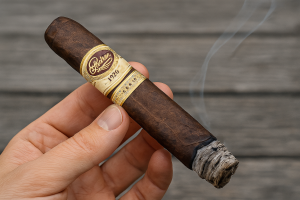What Are the Most Common Cigar Hand Rolling Techniques?

Hand rolling cigars is a centuries-old tradition that requires skill, precision, and dedication. The techniques used in crafting a cigar can greatly impact its flavor, burn, and overall enjoyment.
In this guide, we will explore some of the most common techniques for handrolling a cigar that master rollers employ to create the perfect piece.
- Basic techniques
- Advanced cigar rolling methods
- Importance of tobacco selection on the choice of rolling techniques
The List of Most Common Techniques for Hand-Rolling Cigars
Over the years, many hand-rolling techniques have been implemented by smoking enthusiasts worldwide. Now, we gave an abundance of them to choose from, so let’s see what are the most popular ones.
Basic Hand Rolling Technique
The basic hand rolling technique is the foundation of crafting a cigar.
- It involves carefully selecting and arranging the filler tobacco, binder leaf, and wrapper to create a well-constructed cigar.
- To start, the filler tobacco is evenly distributed and compacted before being wrapped in the binder leaf.
- The wrapper leaf is then delicately applied to encompass the cigar.
This method requires steady hands and attention to detail to ensure a smooth draw and consistent burn.
Entubado Technique
The entubado technique is a traditional method that originated in Cuba and is favored by many skilled cigar rollers.
This technique involves rolling each filler tobacco leaf into individual tubes before assembling them in the cigar. By creating these tubes, the cigar roller ensures an even distribution of tobacco throughout the cigar, resulting in a more consistent burn and enhanced flavor profile.
Booking Technique
The booking technique is another common hand rolling method that contributes to the overall quality of a cigar. When using the booking technique, the roller carefully folds the wrapper leaf around the binder and filler tobacco, similar to folding a book.
This method helps to create a smooth and seamless appearance, as well as an even draw, allowing for a more enjoyable smoking experience.
Banishing Technique
The banishing technique is a unique approach to hand rolling cigars that focuses on the spiral motion of rolling the cigar. This method involves carefully twisting the cigar wrapper leaf around the binder and filler tobacco in a spiral pattern.
The banishing technique is said to enhance the flavor and balance of the cigar, as well as contribute to a more consistent burn. By mastering this technique, cigar rollers can create cigars with a smoother draw and complex flavor profile.
The Importance of Tobacco Selection
The quality of a hand-rolled cigar heavily depends on the selection of tobacco used in its construction. Understanding the different types of tobacco and their roles in a cigar can enhance your appreciation for the craft.
Types of Tobacco Leaves
- Wrapper: The outermost leaf of the cigar, the wrapper is crucial for the cigar's flavor and appearance. Wrappers come in various shades and types, such as Connecticut, Habano, and Maduro, each offering unique flavor profiles.
- Binder: This leaf holds the filler tobacco together and helps maintain the cigar’s structure. While less visible than the wrapper, the binder also contributes to the cigar's flavor.
- Filler: The core of the cigar, the filler tobacco, can consist of leaves from different parts of the tobacco plant. Long filler, which uses whole leaves, and short filler, which uses chopped leaves, can both be used depending on the desired complexity and burn characteristics of the cigar.
Regions and Their Unique Flavors
Different regions produce tobacco with distinct characteristics due to variations in climate, soil, and cultivation practices. For instance:
- Cuban Tobacco: Known for its rich, full-bodied flavor and smoothness.
- Dominican Republic Tobacco: Offers a milder, aromatic profile with a slightly sweet taste.
- Nicaraguan Tobacco: Characterized by its bold, spicy flavors and robust strength.
Aging and Fermentation
Proper aging and fermentation of tobacco leaves are essential processes that enhance the flavor and smoothness of a cigar. During fermentation, the leaves are carefully monitored and turned to ensure even processing, which helps to reduce bitterness and improve the overall smoking experience.
Aging allows the flavors to mature and meld together, resulting in a more refined and enjoyable cigar.
It Doesn’t Take Much to Learn Hand Rolling a Cigar Like a Pro
Mastering the art of hand rolling cigars is a labor of love that requires practice, patience, and attention to detail. By exploring and perfecting common hand rolling techniques such as the entubado, booking, and banishing methods, cigar enthusiasts can elevate their smoking experience and appreciate the craftsmanship that goes into creating each cigar.
Whether you are a novice or a seasoned cigar aficionado, understanding these techniques can deepen your appreciation for the art of cigar rolling and enhance your enjoyment of a well-crafted cigar.















